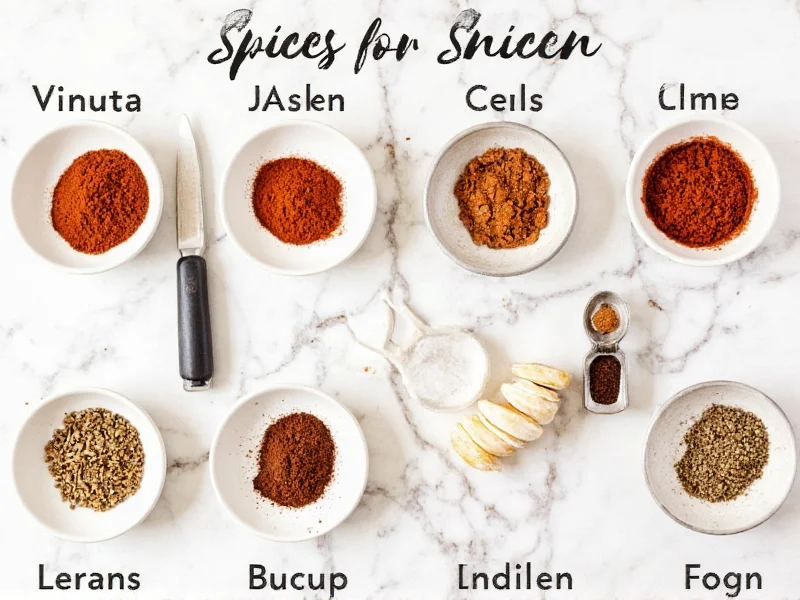Creating the perfect meatloaf hinges on balanced seasoning. While meatloaf recipes vary by region and family tradition, the spice blend makes or breaks the final dish. Understanding which spices enhance ground meat's natural flavors—and in what proportions—separates an average meatloaf from an exceptional one.
Essential Meatloaf Spices and Their Roles
Not all spices work equally well with the rich, dense texture of meatloaf. The following ingredients form the foundation of a well-seasoned meatloaf that satisfies without overwhelming:
- Garlic powder - Provides consistent savory depth without burning like fresh garlic
- Onion powder - Delivers sweet, aromatic notes that distribute evenly
- Black pepper - Adds necessary heat and complexity (freshly ground works best)
- Paprika - Sweet paprika adds mild fruitiness; smoked paprika contributes depth
- Dried thyme - Earthy herbal notes that complement beef's richness
- Worcestershire sauce - Umami booster that ties all flavors together
Optimal Meatloaf Spice Measurements
Getting the spice-to-meat ratio correct prevents blandness or overpowering heat. For a standard 2-pound meatloaf using 80% lean ground beef:
| Spice | Measurement for 2 lbs Meat | When to Add |
|---|---|---|
| Garlic powder | 1½ teaspoons | Mixed into meat |
| Onion powder | 1 teaspoon | Mixed into meat |
| Freshly ground black pepper | 1 teaspoon | Mixed into meat |
| Sweet paprika | 1 teaspoon | Mixed into meat |
| Dried thyme | ½ teaspoon | Mixed into meat |
| Cayenne pepper | ¼ teaspoon | Mixed into meat |
| Worcestershire sauce | 2 tablespoons | Mixed into meat |
These measurements create balanced seasoning for traditional meatloaf without overwhelming the meat's natural flavor. Adjust paprika and cayenne amounts based on personal heat tolerance when preparing meatloaf spice blend measurements for sensitive palates.
Building Flavor Profiles with Meatloaf Spices
Different spice combinations create distinct meatloaf experiences. Understanding these profiles helps customize your recipe:
Classic American Meatloaf
The traditional approach uses equal parts garlic and onion powder with black pepper as the backbone. Add 1 teaspoon of dried parsley and ½ teaspoon of mustard powder for complexity. This combination works perfectly for best spices for traditional meatloaf that satisfies family dinner expectations.
Mediterranean-Inspired Meatloaf
Replace thyme with oregano and add ½ teaspoon of rosemary. Include a tablespoon of capers and chopped sun-dried tomatoes. This variation creates a brighter profile ideal for those seeking meatloaf seasoning without onion powder alternatives.
Smoky Southwest Meatloaf
Use smoked paprika instead of sweet paprika and add ½ teaspoon of cumin. A dash of chipotle powder (⅛ teaspoon) provides gentle heat. This blend delivers robust flavor for homemade meatloaf spice mix with a kick.
Common Meatloaf Seasoning Mistakes
Even experienced cooks make these seasoning errors that compromise meatloaf quality:
- Over-relying on fresh garlic and onion - They can create uneven pockets of intense flavor and burn during cooking
- Using too much salt upfront - Many binders (like breadcrumbs) and sauces (like ketchup) already contain salt
- Adding spices only to the exterior - Seasoning must be distributed throughout the meat mixture
- Skipping acid components - A tablespoon of tomato paste or Worcestershire balances richness
- Using stale spices - Ground spices lose potency after 6 months; replace regularly for optimal meatloaf seasoning ratio
Special Dietary Considerations
Adapting meatloaf spices for dietary needs requires thoughtful substitutions:
Low-Sodium Meatloaf
Omit added salt but keep other spices at full strength. Increase garlic powder to 2 teaspoons and add ½ teaspoon of celery seed for depth. Use no-salt tomato paste instead of regular for your gluten-free meatloaf spices preparation.
Gluten-Free Meatloaf
Most spices are naturally gluten-free, but verify Worcestershire sauce (some contain barley). Use certified gluten-free oats as binder instead of breadcrumbs to maintain texture without compromising your meatloaf spice blend measurements.
When to Add Spices During Preparation
Timing affects flavor development significantly:
- Dry spices - Mix thoroughly with meat and other ingredients before shaping
- Liquid seasonings (Worcestershire, soy sauce) - Combine with eggs before adding to meat
- Finishing spices - Sprinkle additional paprika on top before baking for visual appeal
Never add delicate fresh herbs like basil or cilantro to raw meat—they lose flavor during baking. Save them for garnish after cooking to preserve their bright notes in your classic meatloaf seasoning ingredients.
Testing Your Seasoning Balance
Before baking the entire loaf, cook a small test patty in a skillet. This lets you adjust seasoning without wasting ingredients. Remember that flavors concentrate slightly during baking, so your raw mixture should taste slightly under-seasoned.











 浙公网安备
33010002000092号
浙公网安备
33010002000092号 浙B2-20120091-4
浙B2-20120091-4